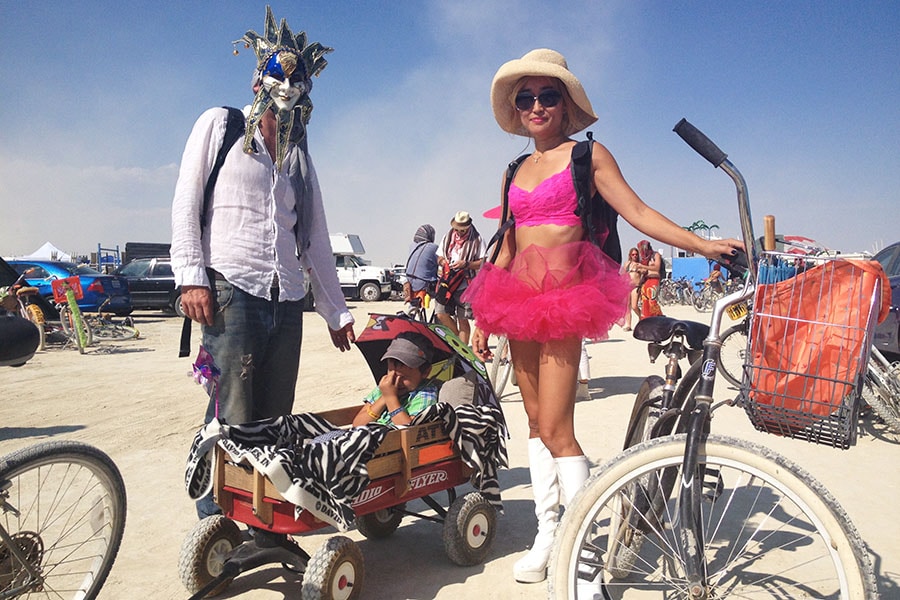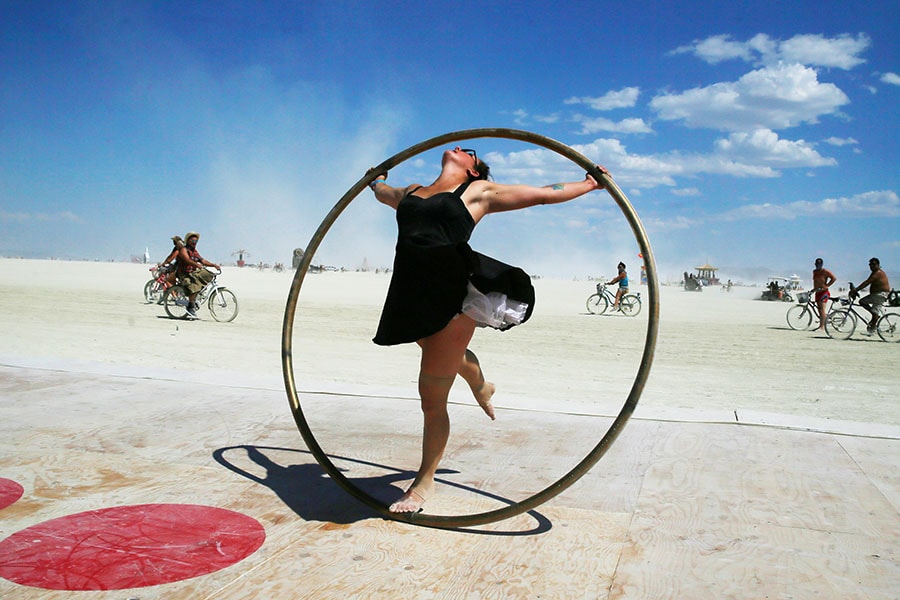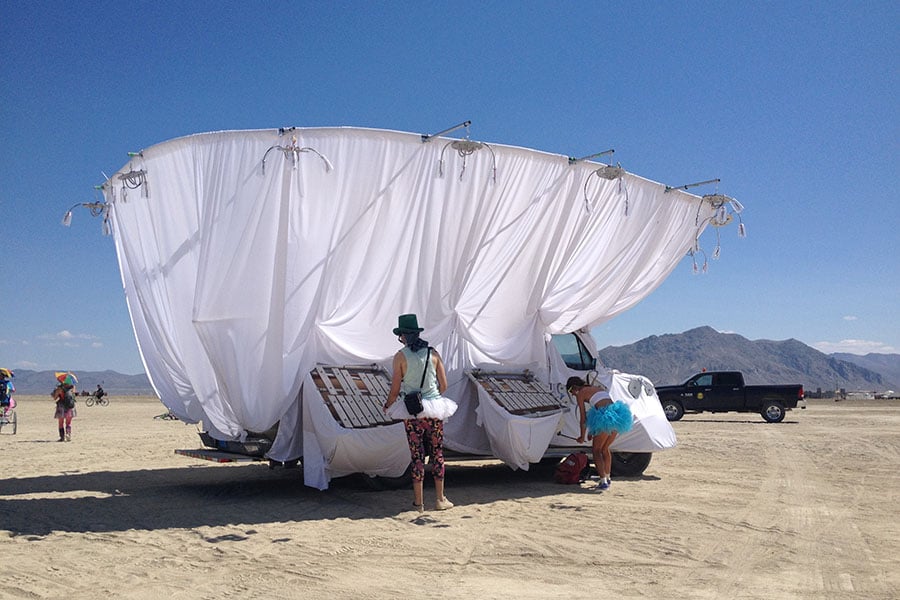
Burning Man 2023: Doused by a freak storm
Thousands of revellers who spent days stranded at the Burning Man festival after a rainstorm had prompted shelter-in-place orders are finally making their slow exodus, creating a huge traffic jam in the muddy roads out of the Nevada Desert
The normally dry desert lakebed that's the site of Burning Man, an annual festival dedicated to art, counterculture and self-expression, was hit with up to an inch of rainfall in just 24 hours over the weekend, flooding campsites and turning the desert site into an expanse of muck. The gathering—launched on a San Francisco beach in 1986—attracts nearly 75,000 artists, musicians and activists for a mix of wilderness camping and avant-garde performances.
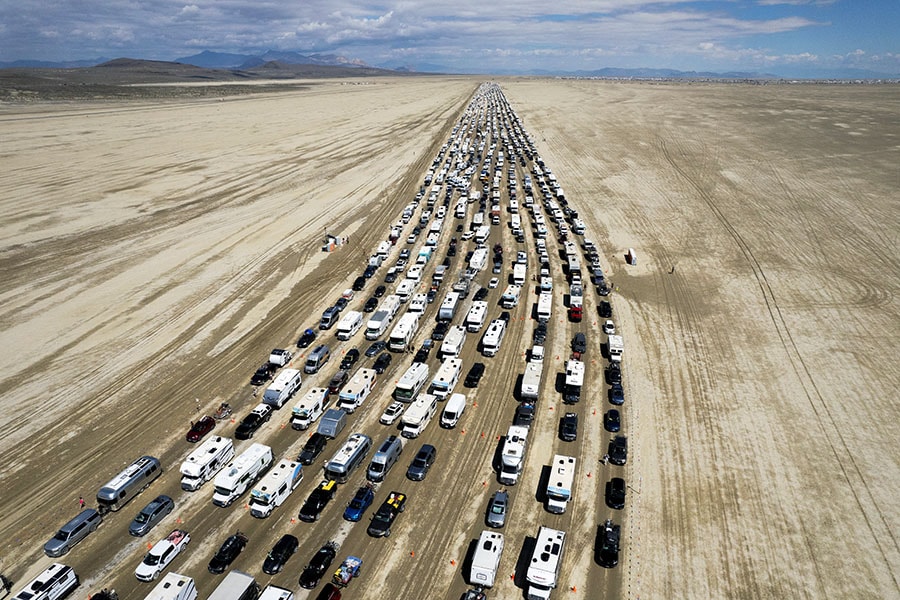 Image: Matt Mills McKnight / Reuters
Image: Matt Mills McKnight / Reuters
Vehicles are seen departing the Burning Man festival after the roads opened, kicking off the exit called the "Exodus" in Black Rock City, Nevada, U.S., September 4, 2023. Disruptions are part of the event's recent history: dust storms forced organisers to temporarily close entrances to the festival in 2018, and the event was twice cancelled altogether during the pandemic.
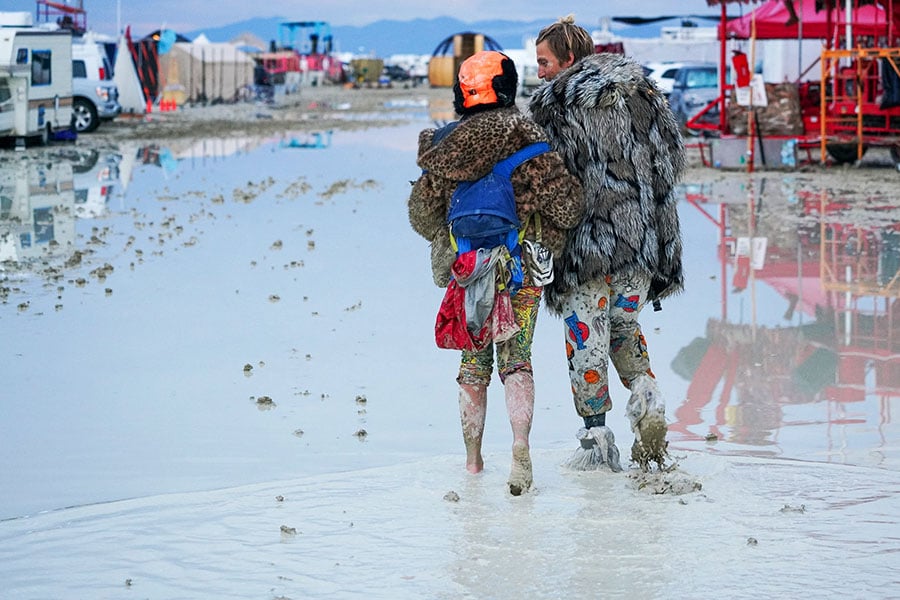 Image: Trevor Hughes/USA Today Network via Reuters
Image: Trevor Hughes/USA Today Network via Reuters
A couple walks through the mud at Burning Man after a night of dancing with friends in Black Rock City, in the Nevada desert, after a rainstorm turned the site into mud on September 2, 2023. According to a news report, many said the unexpected rain had brought out the gritty, self-reliant roots of a festival that has sometimes been criticised for gentrifying into a destination party for tech moguls and social media influencers.
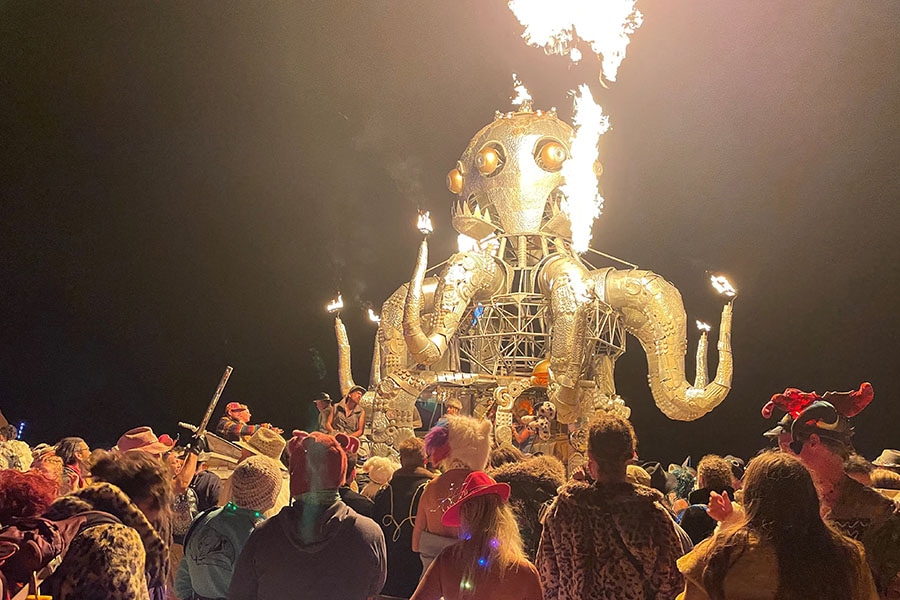 Image: Julie JAMMOT / AFP
Image: Julie JAMMOT / AFP
